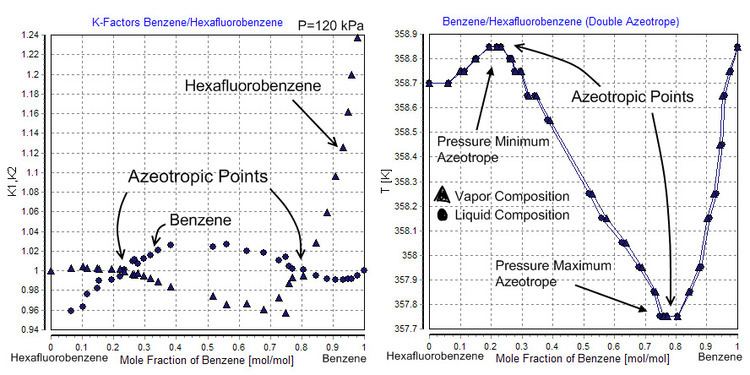 | ||
The Dortmund Data Bank (short DDB) is a factual data bank for thermodynamic and thermophysical data. Its main usage is the data supply for process simulation where experimental data are the basis for the design, analysis, synthesis, and optimization of chemical processes. The DDB is used for fitting parameters for thermodynamic models like NRTL or UNIQUAC and for many different equations describing pure component properties like e. g. the Antoine equation for vapor pressures. The DDB is also used for the development and revision of predictive methods like UNIFAC and PSRK.
Contents
Mixture properties
The mixture data banks contain currently (April 2007) approx. 308,000 data sets with 2,157,000 data points for 10750 components building 84870 different binary, ternary, and higher systems/combinations.
Pure component properties
The pure component properties data bank contains currently (April 2007) approx. 157,000 data sets with 1,080,000 data points for 16700 different components.
History
The Dortmund Data Bank was founded in the 1970s at the University of Dortmund in Germany. The original reason for starting a vapor–liquid phase equilibria data collection was the development of the group contribution method UNIFAC which allows to estimate vapor pressures of mixtures.
The DDB has since been extended to many other properties and has increased dramatically in size also because of intensive (German) government aid. The funding has ended and the further development and maintenance is performed by DDBST GmbH, a company founded by members of the industrial chemistry chair of the Carl von Ossietzky University of Oldenburg, Germany.
Additional contributors are the DECHEMA, the FIZ CHEMIE (Berlin), the Technical University in Tallinn, and others.
Availability
The Dortmund Data Bank is distributed by DDBST GmbH as in-house software. Many parts of the Dortmund Data Bank are also distributed as part of the DETHERM data bank which is also available online.
